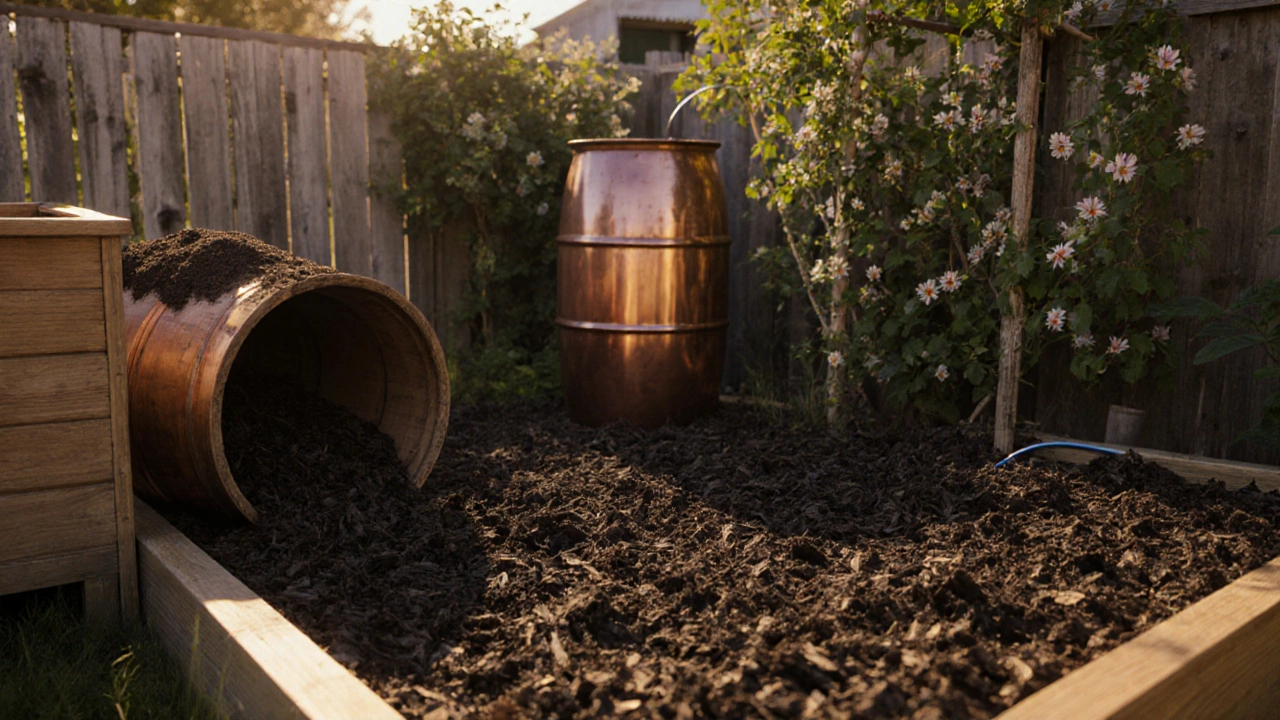Discover the top alternative names for sustainable gardening, their meanings, best uses, and practical tips for greener planting.
Regenerative Gardening: Build Healthy Soil, Grow Stronger Plants
When you practice regenerative gardening, a method of growing food and flowers that heals the soil instead of depleting it. Also known as soil-first gardening, it’s not about adding chemicals or buying expensive inputs—it’s about working with nature to make your garden stronger every year. Unlike conventional methods that strip nutrients from the ground, regenerative gardening brings life back to the dirt. It’s how farmers in Maharashtra are turning cracked, tired soil into rich, dark earth that holds water and feeds plants without irrigation. And it’s not magic—it’s simple, repeatable actions anyone can do, even on a balcony.
This approach relies on a few core ideas: feeding the soil, not the plant; keeping the ground covered; and letting nature do the heavy lifting. For example, composting, turning kitchen scraps and dry leaves into nutrient-rich humus is the backbone of regenerative gardening. You don’t need a big yard—just a bin, some brown and green materials, and a little patience. Then there’s cover cropping, growing plants like clover or mustard between main crops to protect and enrich the soil. In India’s hot, dry seasons, this keeps the soil cool, stops erosion, and adds nitrogen naturally. These aren’t new ideas—they’re old practices revived because they actually work.
What makes regenerative gardening different from regular organic gardening? It’s the goal. Organic gardening avoids synthetic inputs. Regenerative gardening goes further—it actively fixes damage. It’s why you’ll find posts here about loosening dense soil with compost and leaf mold, why we talk about fixing drip emitters to avoid water waste, and why we focus on plants that bloom year-round without needing extra help. You won’t find advice on chemical fertilizers or synthetic mulches here. Instead, you’ll see how to use what’s already around you: fallen leaves, eggshells, grass clippings, even rice husks. These aren’t waste—they’re resources waiting to rebuild your garden’s foundation.
Whether you’re growing brinjal on a terrace, planting zinnias to keep rabbits away, or trying to make your clay soil easier to dig, regenerative gardening gives you the tools to succeed without spending more money. It’s about observation—notice how your soil feels after rain, watch which plants thrive without watering, learn when to leave plant roots in the ground instead of pulling them out. The results? Fewer pests, less watering, richer harvests, and soil that looks and feels alive. Below, you’ll find real-world guides from Indian gardeners who’ve made this shift. No theory. No fluff. Just what works on balconies, backyards, and small farms across the country.
